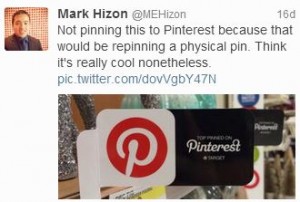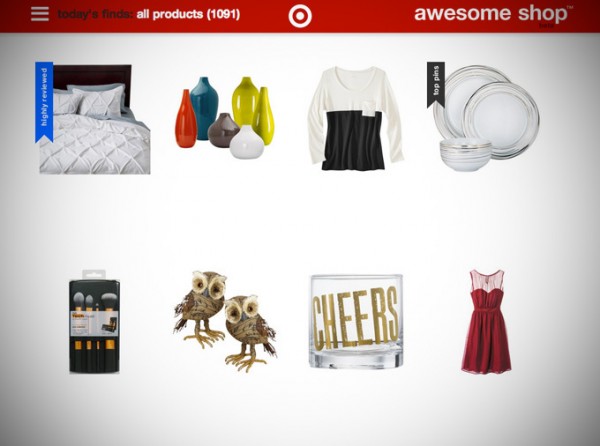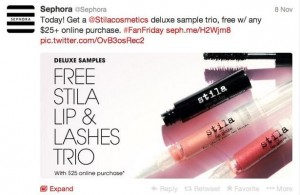What better way to start off our retail technology blog than by doing a run down of our predictions for the top 10 retail technology trends for 2014! Be sure to bookmark our blog as we unveil and discuss each of these prevalent trends heading into next year to help your organization prepare for the future model of retailing.
 We’re going to kick things off by discussing the topic of Social Commerce and Marketing. Going forward, investment in social media will be a necessity. Why is social media a must for retail marketers? In a retail context, social media provides another element of engagement and adds shopper value at different stages of the purchasing cycle. Brands that can build a social network around an e-commerce platform will be able to form a clear value proposition for social commerce as a sales driver. Here are 20 stats about how social media has an influence on purchasing decisions from ExactTarget.
We’re going to kick things off by discussing the topic of Social Commerce and Marketing. Going forward, investment in social media will be a necessity. Why is social media a must for retail marketers? In a retail context, social media provides another element of engagement and adds shopper value at different stages of the purchasing cycle. Brands that can build a social network around an e-commerce platform will be able to form a clear value proposition for social commerce as a sales driver. Here are 20 stats about how social media has an influence on purchasing decisions from ExactTarget.
So what is social commerce and why can it have an impact on your business? Marketing consultant, Heidi Cohen, compiled 19 definitions of social commerce discussed in her blog post. 19 definitions might be a bit much but it’s definitely safe to say it’s an area of retail that’s still evolving.
This holiday season we saw retailers use creative tactics leveraging social and mobile platforms to influence and generate holiday shopping sales this season, and initial indications are that these strategies saw promising results. I’ve compiled some social commerce examples and broke them down categorically, similar to how Mashable did, for the purpose of defining strategies for retailers to employ.
Social Networks – The Power of Pinterest
To start, here’s a great stat from TechCrunch – On Cyber Monday, Pinterest more than tripled the revenue sent to online retailers!
TechCrunch reported that Target were experimenting with a Pinterest-powered online (e-commerce) storefront which they’re appropriately calling the “Awesome Shop”. I’m already a fan of Pinterest as a consumer for browsing the latest fashion trends, makeup and beauty products and I’ve even started to rely on it for work purposes as I research topics. Now mix in one of my “go-to” places for shopping? A perfect way to window shop!
While traffic and conversion details haven’t been disclosed on this particular project Target has reported a 70 percent increase in traffic in the first six weeks following the roll-out of Pinterest’s “Rich Pins” earlier this year. That has to mean something for marketers wondering if user-curated shopping powered by Pinterest has commerce benefits, right? Target may be onto something with their Pinterest-inspired pinboards.
Frankly, I think Pinterest could very well be the social commerce platform of the future (maybe even a threat to Amazon?) There are so many opportunities for integration:
- Nordstrom incorporates Pinterest into its in-store marketing by identifying the top “pinned” items to improve sales and connect channels.
- JCrew released their style guide/look book to Pinterest followers before releasing it to the general public.
- Pinterest is great for Christmas wish lists so at some point, wouldn’t it make sense to allow people to buy things off a wish list without having to leave the site?
- Rich data around understanding consumer’s preferences for product bundling and offers is a powerful connection for retailers.
Social Networks – Linking Facebook Ads & Peer Recommendations
I can’t help it, I’m using Target as an example again (can you tell I’m a fan of their marketing?) They dida great job of incorporating Facebook Ads rather effectively into their holiday shopping campaign that crossed over social networks (#MyKindofHoliday) in addition to their normal Facebook posts and increased promotion of the Cartwheel app. According to Gartner, 74% of consumers rely on social channels to guide purchases of goods and services. So not only do brands rely on social platforms like Facebook for earned and paid media to bring customers to their e-commerce sites, but they’re relying on others for referrals and social “sharing” of content.

Facebook Ad for Target’s Cartwheel app
Social Networks – Twitter Preview Images & Hashtags
I’m sure a vast majority are aware of a few successful social campaigns brands like Starbucks (@Tweetacoffee) and AMEX (twitter + AMEX) have launched. In fact, Mashable reports that the Starbucks campaign has generated $180K in sales to date since it’s launch in October. Twitter’s benefits now even extend into the creative department. Users now automatically see images in their timelines. This presents an opportunity for brands to become more creative with the way they use images to convert shoppers. I’ve called out an example from one of Sephora’s tweets here.
So whatt all does this mean for retailers heading into 2014? A likely investment in technology and use of APIs to expose mobile and digital channels.
Technology Investments for Social Commerce
All of these social social commerce and marketing strategies are examples of how brands can create more seamless shopping experiences in an omni-channel retailing environment. To manage these experiences, businesses will need to tightly couple customer engagement systems, marketing technology and social tools to better understand shopper behaviors and patterns and ultimately execute these cross-channel campaigns successfully. To accomplish this, retail technology investments in 2014 will include:
- creating social profiles in Salesforce or other CRM systems (Social CRM)
- cross-channel campaign management and re-targeting with Enterprise Marketing Management (EMM) platforms
- re-inventing email marketing programs and lead management with Eloqua, ExactTarget, Pardot and the like
- social listening and real-time insights with tools like Radian6 and IBM’s Consumer Insights
- building out mobile marketing, mobile couponing, and mobile payments integration
As you can see, there’s a lot of room for growth for retailers when it comes to defining a social commerce strategy. With that though comes a lot of testing to have a solid business case for large-scale investments. Retailers are cautious about social in the midst of a flurry of digital disruption. It’s very possible that the Facebook platform could look very different in 5 years, consumer preferences may shift to other networks or new channels may emerge.


